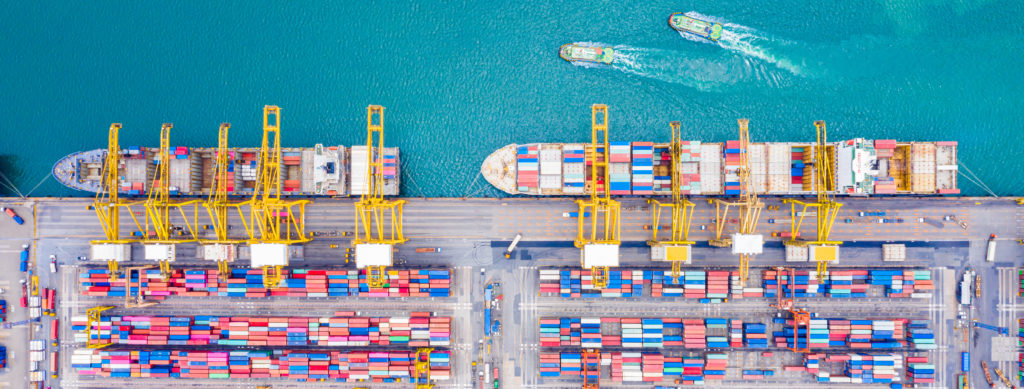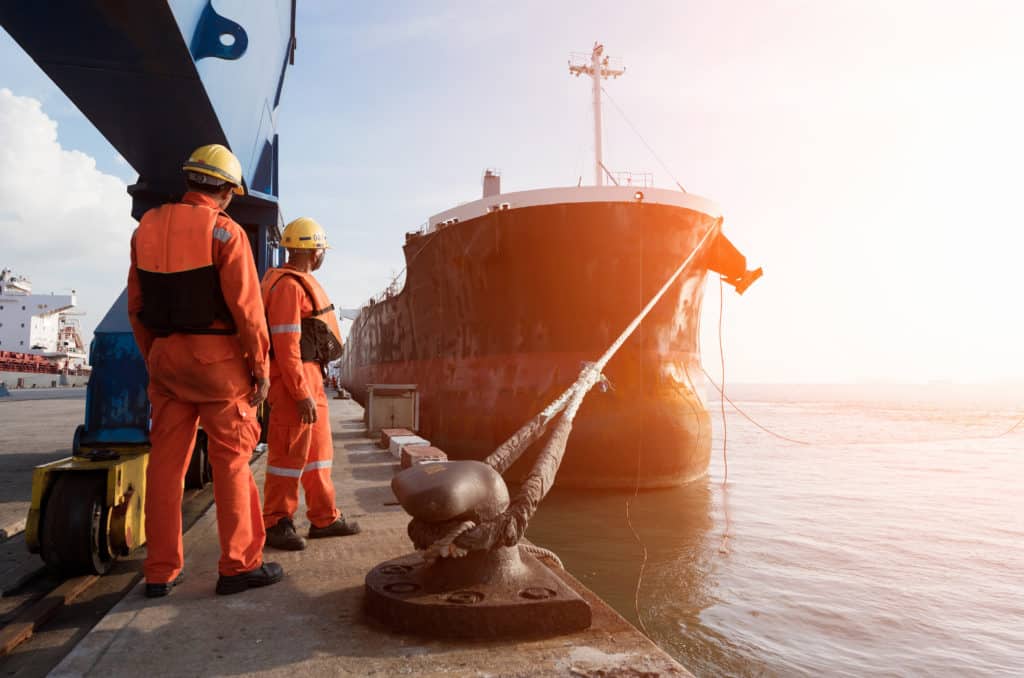Ports, essential infrastructures for maritime freight, have committed themselves to decarbonisation. They are areas which house numerous activities – industry, transport, tourism – in direct contact with a city, and it is this proximity to the inhabitants which has for a long time pushed the sector to work towards the reduction of noise, odour, and atmospheric pollution. But today policy-makers are increasingly concerned by a more serious type of pollution: greenhouse gas emissions (GHG).
For an ecological transition
“Europe is the most advanced region in the world when it comes to the energy transition of ports,” says César Ducruet, CNRS geographer at the Economix laboratory of the University of Paris Nanterre. Numerous projects are concentrated in the North-West, but they are rarer in the Mediterranean. In France, only ports with more than 250 employees are obliged to assess their carbon footprint. Although others are integrating the ecological transition into their strategic projects1.

“Ports can impose constraints on ships. After September 11th 2001, the United States imposed important security measures that were subsequently disseminated throughout the world,” recalls Gaëlle Guéguen-Hallouët, professor of public law at the University of Western Brittany. “We can expect to see the same thing happen with decarbonisation: for some years now, we have seen that port authorities want to be driving forces behind the ecological transition.” The International Association of Ports and Harbours (IAPH), for example, set up an environmental indicator (the Environmental Ship Index) in 2011 to evaluate the emissions of ships. Depending on a threshold defined by each port, ships that pollute less can benefit from reductions in port dues. Although membership of the scheme is optional, nearly 7,000 ships currently take part.
GHG emission factors
It is difficult to precisely measure GHG emissions from ports. The geographical contours of the port area vary according to estimates, whether at sea or on land, and industrial activities (not related to freight) are sometimes included. For the International Maritime Organisation (IMO), the port area begins where the ship reduces speed in open sea to enter the approach phase2. GHGs are emitted during manoeuvres by ships, loading and unloading of goods at berth, various port activities, land transport, etc. A recent analysis by the Transport & Environment organisation3 estimates that the port of Rotterdam, the most polluting in Europe, emits 13.7 million tonnes (Mt) of CO2 per year, followed by Antwerp (7.4 Mt of CO2) and Hamburg (4.7 Mt of CO2) (compared with one billion tonnes for all maritime freight).
The main culprits? Ships. They emit 10 times more GHGs than the port activities themselves4. It should be noted, however, that emissions from ships in port areas only represent a few percent of their total emissions5. For some ships, such as chemical tankers and oil tankers, however, this share is higher and can exceed 20% of their total emissions. “Ships account for 60% of the port’s emissions, followed by land transport (30%) and the terminal (10%),” says César Ducruet.
Ships account for 60% of a port’s emissions, followed by land transport (30%) and the terminal (10%).
Methods of decarbonisation
What is the solution? “The ideal port would implement a whole range of reduction measures,” summarises César Ducruet. On the quayside, auxiliary engines burn fuel to generate the electricity needed on board the ship: to cool the containers, or to activate the pumps and cranes for loading goods. This is the most significant emission item (about half of the emissions for the 4 ports studied6): it represents 11% of global maritime emissions7. The electrical connection of ships at berth – available in the port of Stockholm since the 1980s – allows the auxiliary engines to be switched off. Emissions are then directly linked to the method of electricity production. Several regulations are therefore pushing the ports to install them: the European Union in particular is imposing the installation of shore-side connections by 2025. In 2020, 66 ports in 16 different countries were already offering this service8, including 8 major ports9.
The transfer of goods is another major mechanism for decarbonisation. Secondary ships transporting goods from international to domestic ports, handling equipment and trucks are major sources of GHG emissions10. The use of LNG for handling equipment, for example, offers the opportunity to reduce port GHG emissions by 25%11. Electrification of cargo handling equipment could reduce CO2 emissions from US ports by 27–45% by 205012. The electrification of trains and heavy goods vehicles offers a potential reduction of 17 to 35% by the same date. “In Europe, 75% of goods are transported by road, and for Le Havre this figure rises to 90%,” says César Ducruet. There is therefore a major potential for decarbonisation.

The final avenue is through organisational and technical measures. The calculation is simple: by reducing the time spent at berth, emissions from ships’ auxiliary engines are directly reduced. In Sydney Harbour, oil and chemical tankers spend an average of 32 to 52 hours in port13. Improving productivity, reducing waiting time for loading/unloading, improving traffic flow, and making customs clearance procedures more efficient are all effective and inexpensive measures that should be implemented14. Various studies estimate their GHG reduction potential at 10–20%. Other technical measures are also recommended, such as automated docking systems, the use of LEDs to illuminate the terminal (the second largest consumer of energy) or the optimisation of the terminal’s surface area, which could reduce GHGs by around 70%15.
Unlike other maritime freight segments, there is no single solution for decarbonising ports. “The varying conditions experienced by each port suggest that emission reduction measures must be tailored to each port,” write the authors of a study published in 201716. In a survey of various port operators, the IMO highlights the importance of regulations and standards as a mechanism for decision makers to take action17. “The IMO produces a large part of the international regulations governing maritime transport, but ports are not only linked to maritime transport,” adds Gaëlle Guéguen-Hallouët. “The diversity of the parties involved in port management, and the variety of their concerns, is a major operational barrier. I think that the European Union has an essential role to play: European law is by its very nature binding for member countries,” he concludes. If it is decided at a European level that only low-emission ships are allowed to enter European ports, this obligation will apply to ships from fleets all over the world.





















